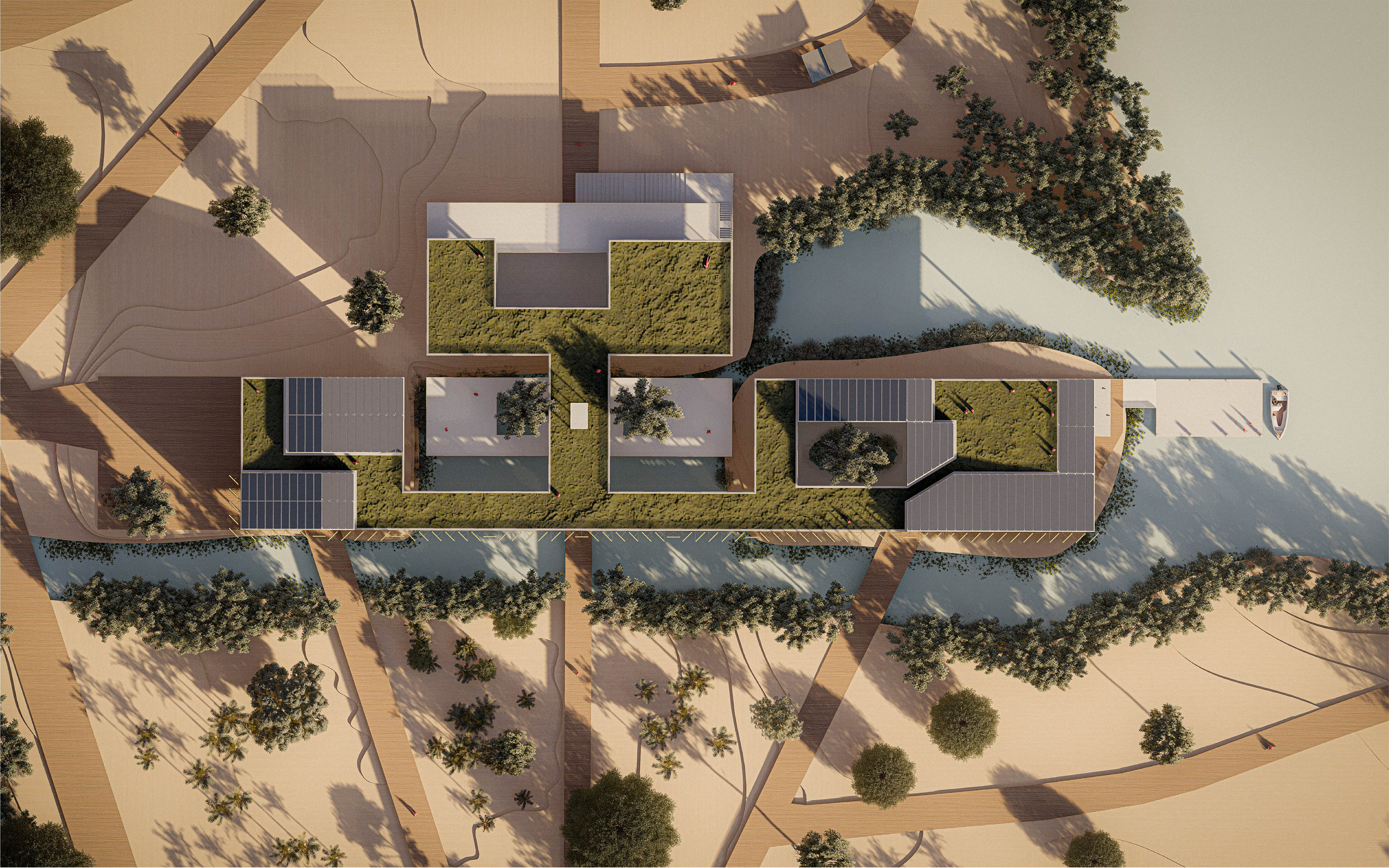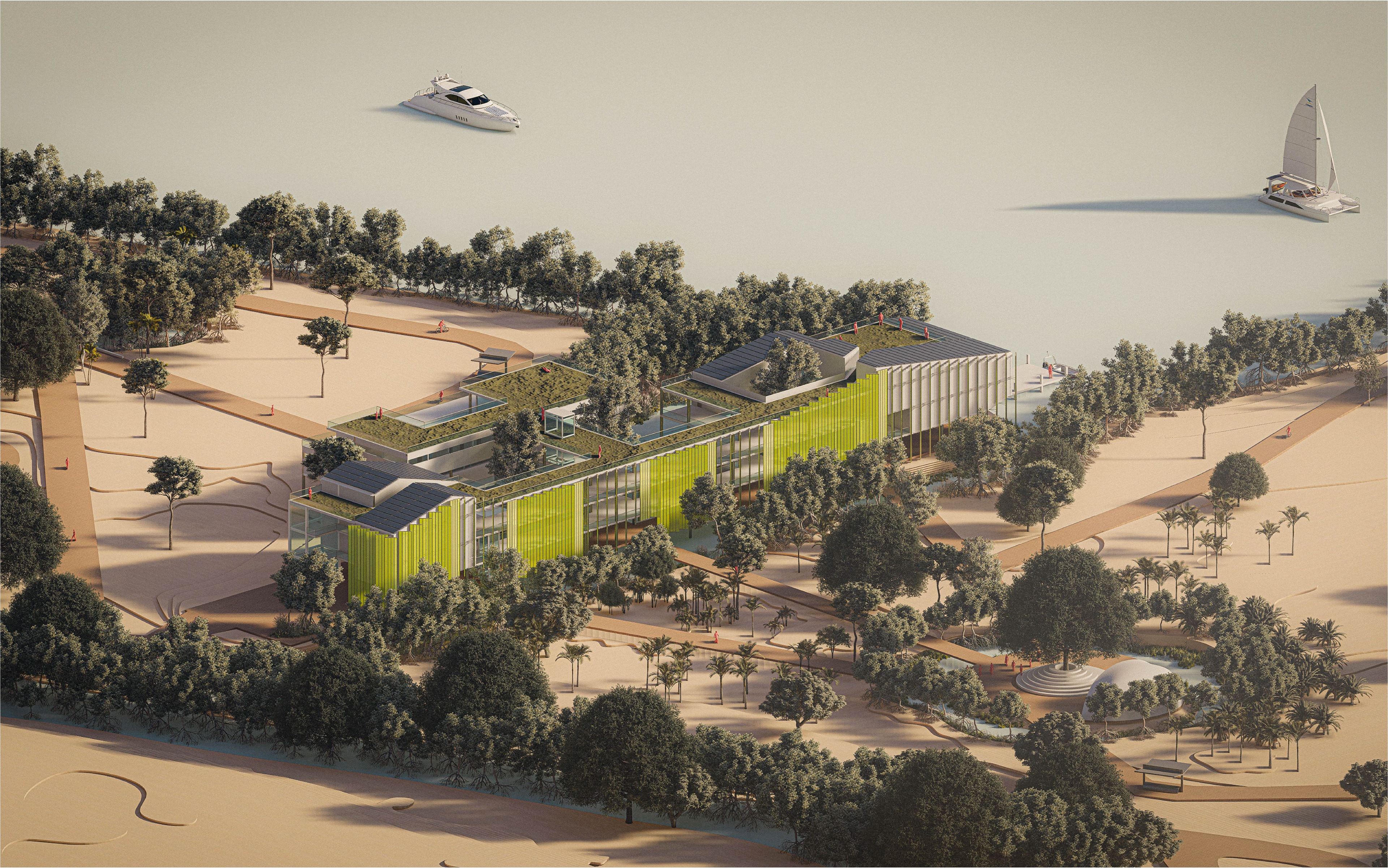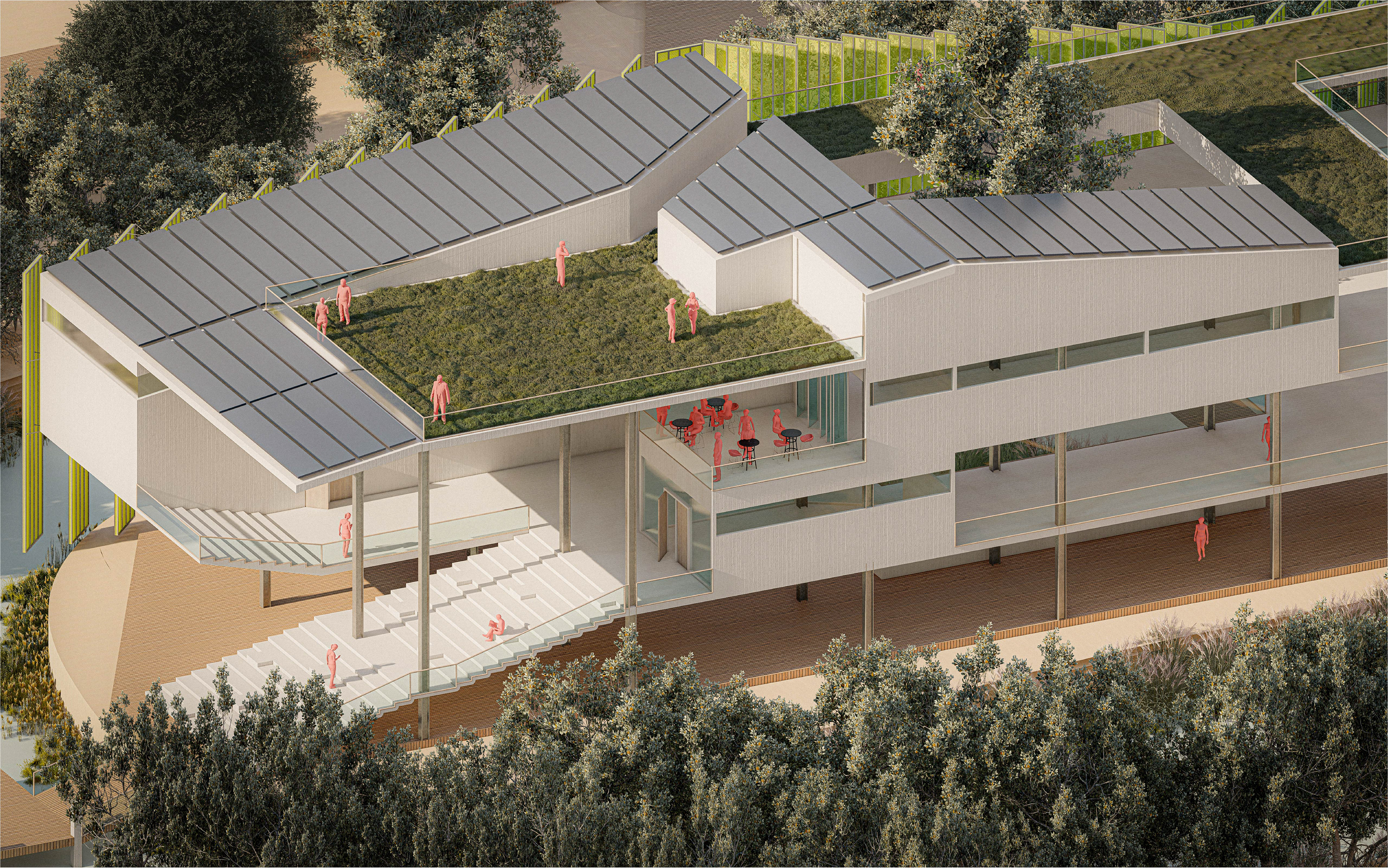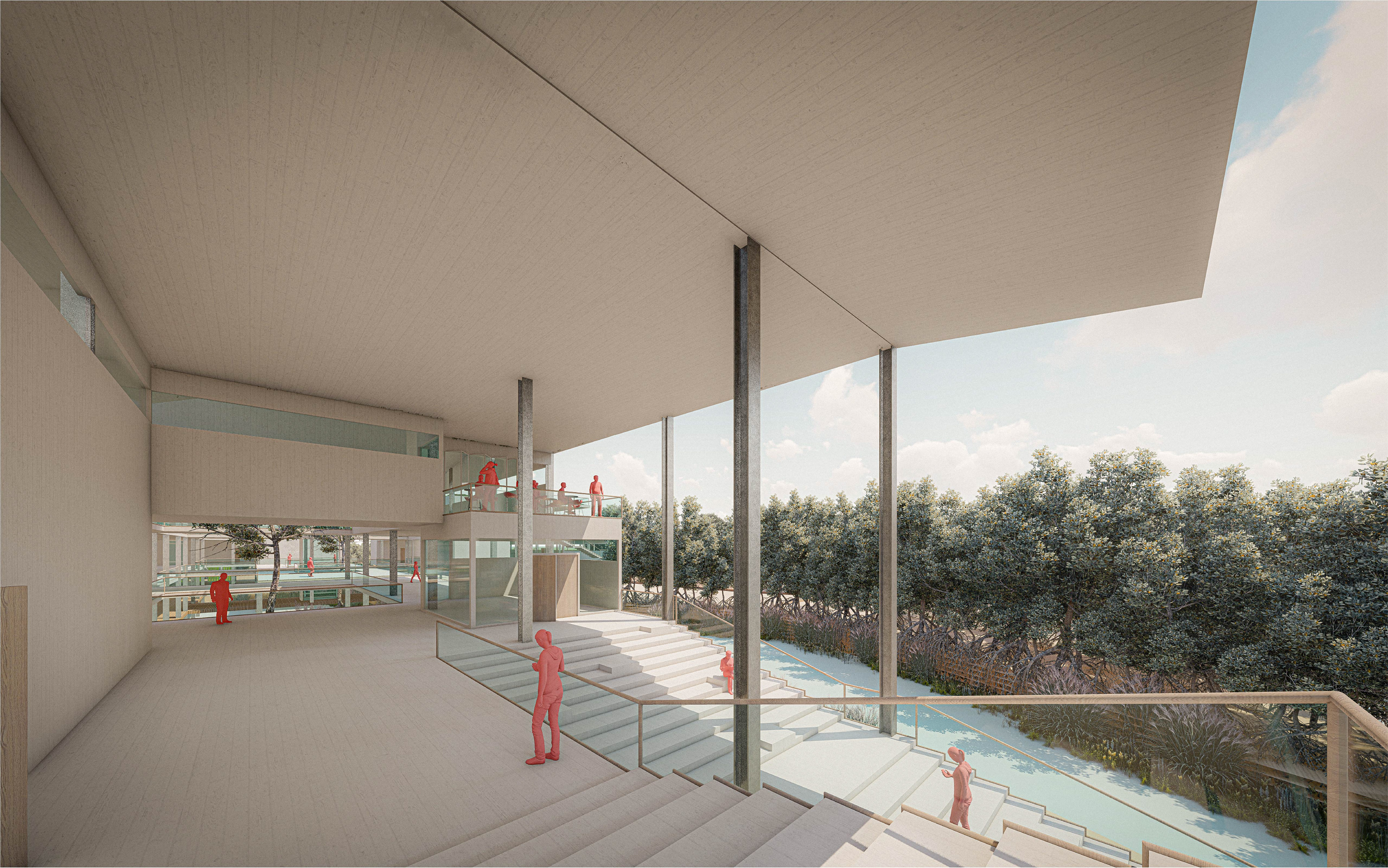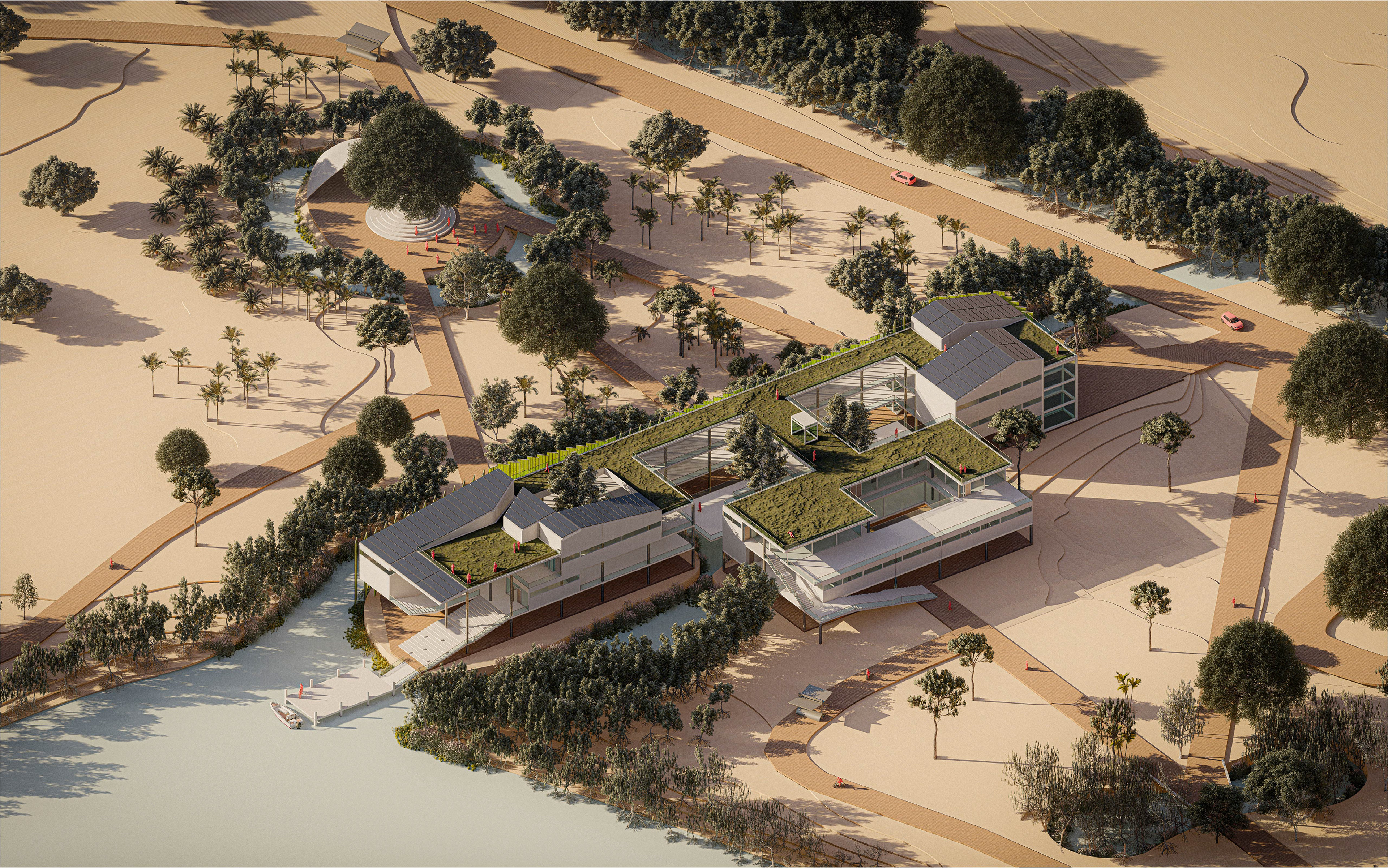The solid central part of a vertebra, to which the arches and processes are attached.
SEA LEVEL RISE
A sea level rise of up to 6 feet would significantly impact FIU's Biscayne Bay Campus. Coastal flooding would inundate large portions of the campus, potentially submerging buildings, infrastructure, and natural areas. Saltwater intrusion could damage freshwater resources and ecosystems, disrupting campus operations and biodiversity. Increased erosion and storm surge vulnerability would further compromise structural integrity and safety. The campus might face frequent closures and costly adaptations, such as constructing flood defenses or relocating facilities. Overall, a 6-foot sea level rise would necessitate substantial changes to preserve the campus's functionality and mitigate environmental and economic impacts.
INITIAL SOLAR STUDIES
STRUCTURE OF MANGROVE FORESTS
The native plants and trees listed below play critical roles in supporting the local ecosystem by providing habitat, stabilizing soils, and enhancing biodiversity. Their presence is essential for maintaining the ecological balance and health of the FIU Biscayne Bay Campus area.
ALGAE PANELS
Algae-powered architecture panels are a sustainable energy resource because they efficiently convert sunlight into bioenergy, reducing carbon emissions. Their integration into building facades offers a dual benefit of energy production and insulation, promoting green building practices and reducing reliance on fossil fuels for a cleaner, more sustainable future.
Environmental and Practical Benefits of Algae-powered Architecture Panels
1. Efficient Energy Conversion: Algae can convert sunlight into energy through photosynthesis at a high efficiency rate, potentially producing more energy per unit area than traditional solar panels.
2. Carbon Sequestration: Algae absorb CO2 during photosynthesis, effectively acting as a carbon sink and helping to reduce greenhouse gas emissions.
3. Biomass Production: The biomass produced by algae can be used to generate biofuels, which are renewable and emit less CO2 compared to fossil fuels.
4. Thermal Insulation: Algae panels can be integrated into building facades, providing thermal insulation which reduces energy consumption for heating and cooling.
5. Scalability and Versatility: Algae systems can be scaled to various sizes and can be incorporated into diverse architectural designs, making them a versatile solution for urban and rural settings.
SOLAR PANELS
Solar power is sustainable due to its inexhaustible nature and zero emissions during energy generation. Implementing solar panels in public architecture reduces dependency on fossil fuels, lowers operational costs, and promotes environmental responsibility. Their integration is practical and aesthetically versatile, enhancing energy efficiency and sustainability in public spaces.
Why solar power is a sustainable and practical choice for public buildings
Renewable and Inexhaustible: Solar energy is derived from the sun, which is an abundant and inexhaustible resource, ensuring a continuous supply of energy without depletion.
Zero Emissions: Solar power generation does not produce greenhouse gasses or pollutants, significantly reducing the carbon footprint compared to fossil fuels.
Cost Savings: Solar panels can lower energy bills for public buildings by providing a free source of energy after the initial installation costs, with many systems having a payback period of just a few years.
Energy Efficiency: Solar panels convert sunlight directly into electricity, enhancing the energy efficiency of buildings and reducing reliance on external power sources.
Aesthetic and Functional Versatility: Modern solar panels can be seamlessly integrated into various architectural designs, including rooftops, facades, and even windows, making them a versatile addition to public architecture.
GREEN ROOF
GREEN ROOF SYSTEM
Green roofs are a valuable architectural feature, enhancing energy efficiency by providing insulation, reducing urban heat islands, and lowering energy costs. They manage stormwater, decreasing runoff and flood risks. Additionally, green roofs improve air quality, support biodiversity, and create green spaces, contributing to a healthier urban environment.
Reduces Stormwater Runoff: Plants absorb rainwater, reducing runoff and lowering the risk of flooding.
Improves Air Quality: Vegetation filters pollutants and produces oxygen, enhancing air quality.
Reduces Urban Heat Island Effect: Green roofs cool the air, mitigating the urban heat island effect.
Provides Insulation: Layers of soil and plants provide thermal insulation, reducing energy costs.
Creates Habitat: Supports biodiversity by providing habitat for insects, birds, and other wildlife.
Improves Air Quality: Vegetation filters pollutants and produces oxygen, enhancing air quality.
Reduces Urban Heat Island Effect: Green roofs cool the air, mitigating the urban heat island effect.
Provides Insulation: Layers of soil and plants provide thermal insulation, reducing energy costs.
Creates Habitat: Supports biodiversity by providing habitat for insects, birds, and other wildlife.
BIOSWALE
Bioswales are valuable in architecture for managing stormwater runoff. They filter pollutants, enhance groundwater recharge, and reduce flooding. By integrating vegetation, bioswales support biodiversity, improve water quality, and promote sustainable urban drainage. This eco-friendly solution mitigates environmental impacts and fosters resilient, green urban landscapes.
Stormwater Management: Bioswales effectively capture and filter stormwater runoff, reducing the burden on sewer systems and minimizing flooding. Studies show that bioswales can reduce peak runoff rates by 20-40% .
Pollutant Filtration: Bioswales remove contaminants from stormwater through soil and plant filtration, significantly improving water quality. Research indicates that bioswales can reduce concentrations of pollutants like nitrates, phosphates, and heavy metals .
Groundwater Recharge: By allowing water to infiltrate the soil, bioswales enhance groundwater recharge, supporting local water supplies and maintaining the hydrological cycle .
Biodiversity Support: The vegetation in bioswales provides habitat for various species, promoting urban biodiversity and contributing to ecological health .
Sustainable Urban Drainage: Bioswales align with sustainable urban drainage system (SUDS) principles, helping to create resilient cities that can adapt to changing climatic conditions and reducing the environmental impact of urban development.
Pollutant Filtration: Bioswales remove contaminants from stormwater through soil and plant filtration, significantly improving water quality. Research indicates that bioswales can reduce concentrations of pollutants like nitrates, phosphates, and heavy metals .
Groundwater Recharge: By allowing water to infiltrate the soil, bioswales enhance groundwater recharge, supporting local water supplies and maintaining the hydrological cycle .
Biodiversity Support: The vegetation in bioswales provides habitat for various species, promoting urban biodiversity and contributing to ecological health .
Sustainable Urban Drainage: Bioswales align with sustainable urban drainage system (SUDS) principles, helping to create resilient cities that can adapt to changing climatic conditions and reducing the environmental impact of urban development.
RENDER GALLERY
